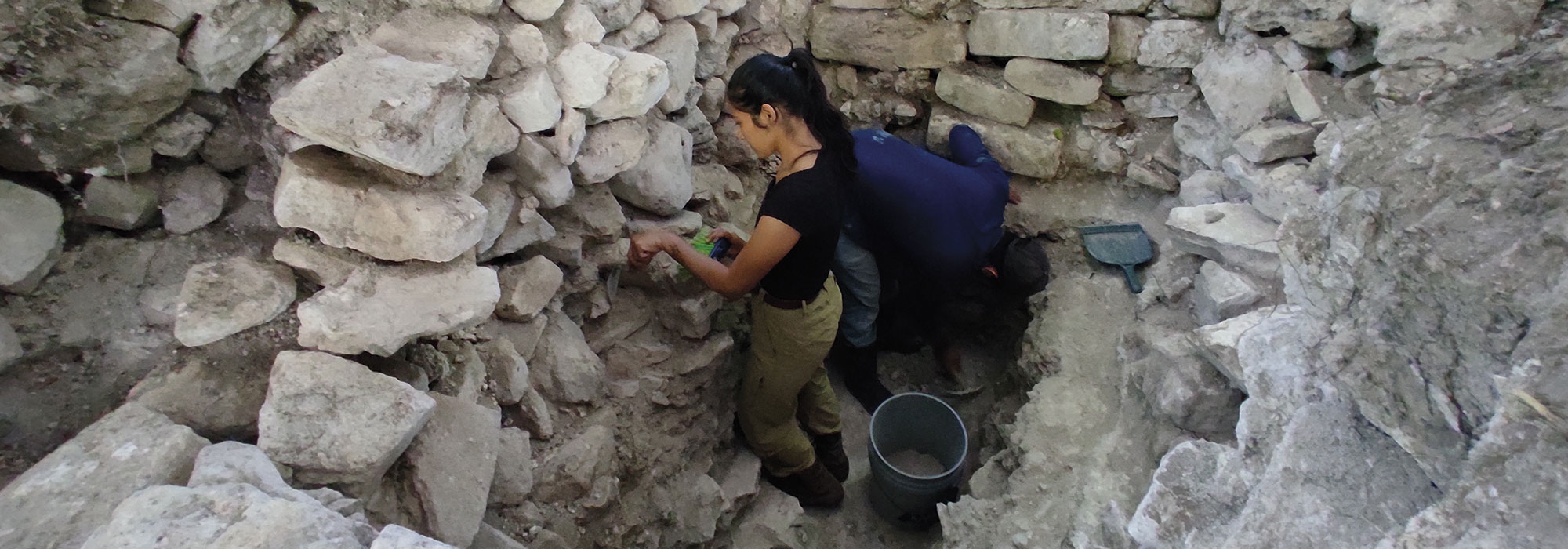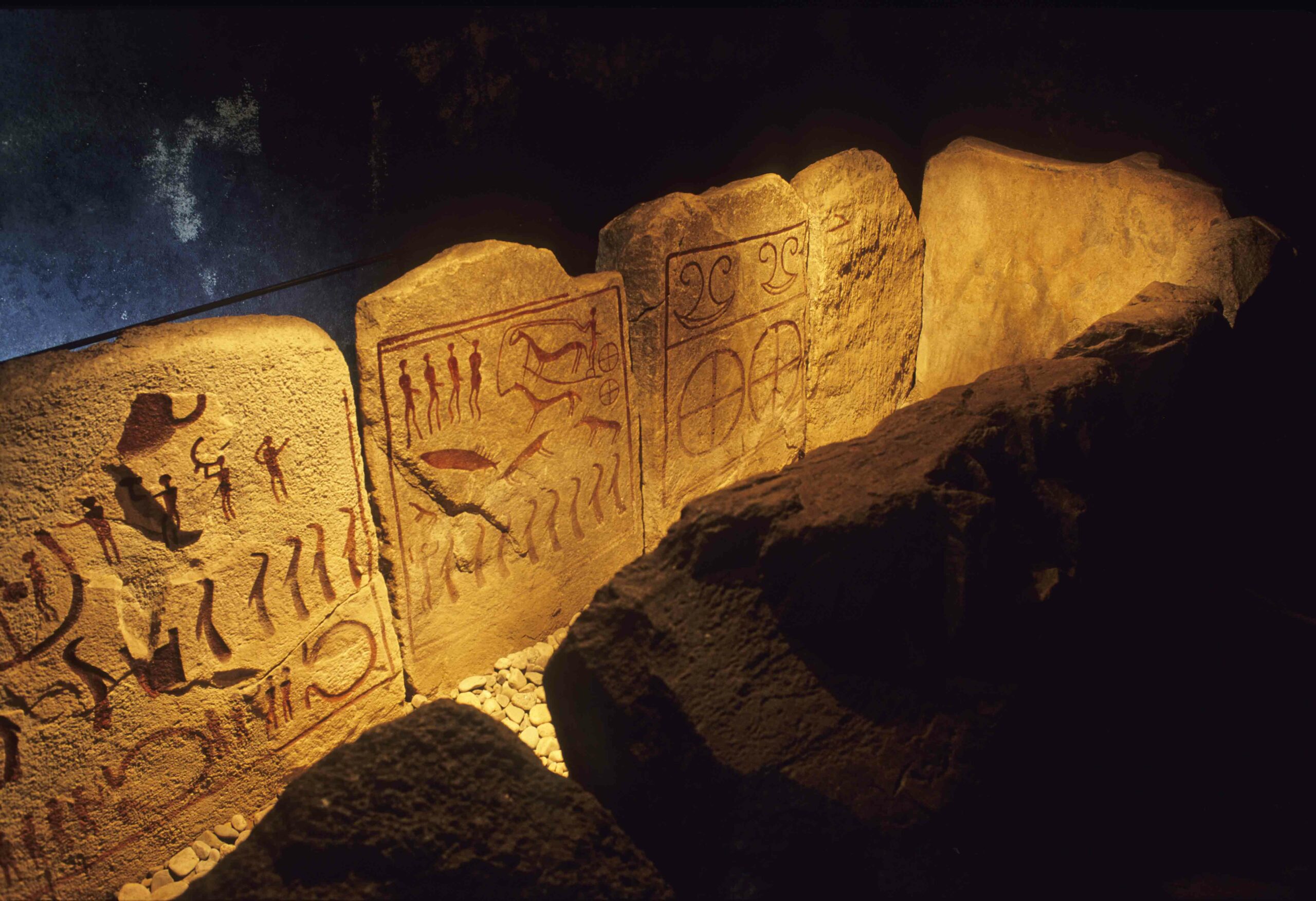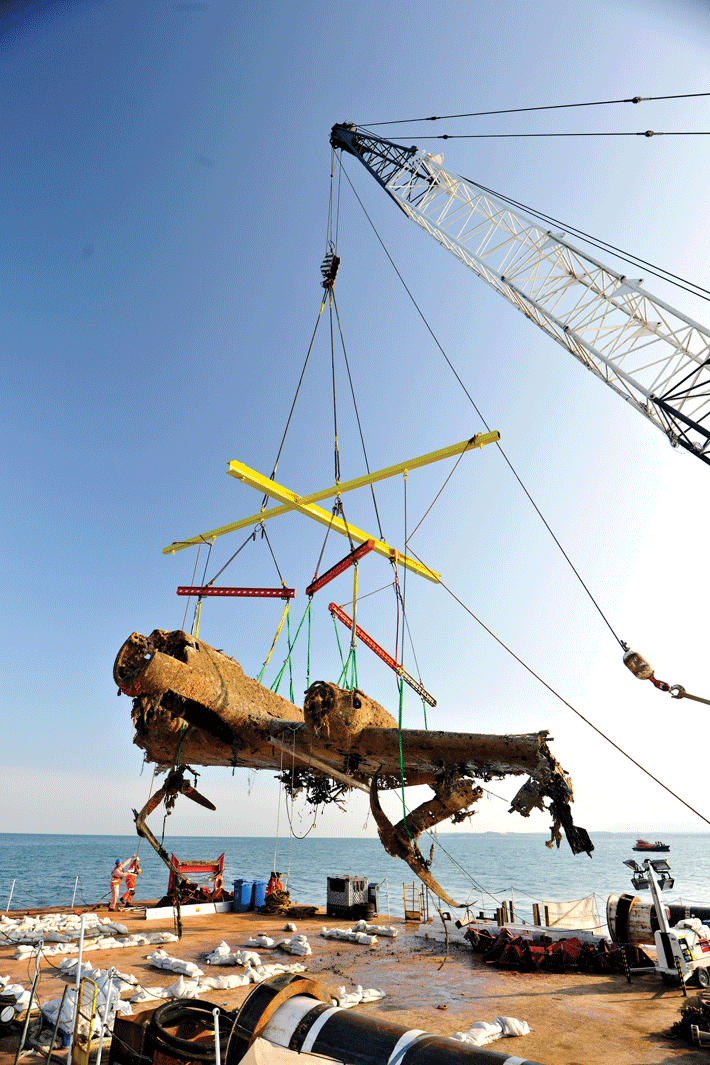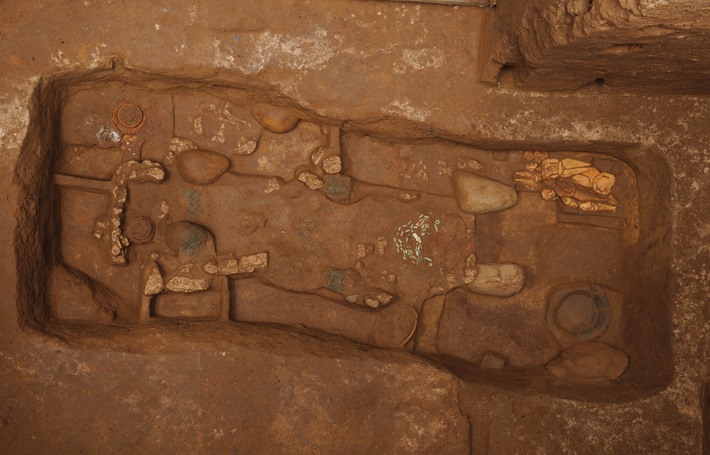
For 2,500 years, the Vulture Lord’s tomb lay hidden in the rugged highlands of southern Guatemala. In comparison to the soaring pyramids of other sites in the region, his burial monument was a fairly modest, 16-foot-high, grassy platform made of clay and cobblestones. But eight feet below its summit, at the bottom of a damp cavity uncovered after two years of meticulous excavation, archaeologists Christa Schieber and Miguel Orrego from Guatemala’s Cultural and Natural Heritage Office found hundreds of apple-green and blue jade beads. A few feet away were six skillfully made clay female figurines, one of which had a face that was old and wrinkled on one side, and fresh and young on the other side. Another had a tattoo design on its back. Nearby, an array of ceramic bowls lay jumbled about, suggesting they had once been piled with food offerings. The most significant of the artifacts was a pendant with an early Maya status symbol—a vulture’s head, in jade, lying exactly where the deceased’s chest would have been. He must have been wearing it when he was buried. Schieber and Orrego named him the Vulture Lord (K’utz Chman in the modern Mayan language), and although his bones had long since rotted away, clusters of precious stones showed exactly where he had worn two bracelets, two anklets, and a jade-encrusted loincloth. “The artifacts are wonderful, and they’re clearly not the sort of things that people would have used in daily life. This was a royal tomb,” says Schieber. And perhaps the earliest Maya royal tomb yet discovered, she adds.
Since excavation began there in 1976, Takalik Abaj, “Place of the Standing Stones,” has attracted archaeologists with its carefully laid out early Maya urban environment—there are at least 83 structures and more than 300 sculpted stone monuments. Although few tombs have been discovered thus far, other structures suggest a history of elite pleasures and rituals. One of Mesoamerica’s largest ball courts, measuring 75 by 16 feet, stretches across one of the site’s few flat areas. According to Schieber, one platform may have been an observatory. On its surface, three parallel lines of stone monuments line up with the Big Dipper when it rises just east of true north. Nestled as it was in a mountain pass, the city had extensive trade networks that stretched as far afield as Mexico’s Veracruz state, El Salvador, and the Petén lowlands. Archaeologists believe Takalik Abaj was a cosmopolitan city and a crossroads of peoples and styles. In its stonework and artifacts, Schieber and Orrego see an unusual mix that may hold answers to one of archaeology’s most vexing questions—how and when did the Maya civilization that would dominate the region for almost 1,500 years replace the more ancient Olmec culture?

Known primarily from their cities on the Gulf of Mexico coast, the Olmec initiated many of the achievements usually associated with the Maya, including written language, ball courts, and perhaps urban planning. But how and why they eventually ceded influence to the Maya remains unclear. Schieber believes Takalik Abaj, and the tomb of the Vulture Lord, offer new insights into how that change might have happened. “This period, around 500 B.C., was a period of transition,” says Schieber. “In the stonework at the site’s ceremonial platforms you can see how sculptors were gradually changing their minds and treating the stone in a different way, moving away from the Olmec style.” It’s notable, too, explains Schieber, that all but two of Takalik Abaj’s 354 stone monuments were locally quarried, and that the ceramics were fashioned of local materials. This suggests that the cultural changes in evidence were not the result of the arrival of an alien population such as the Maya bringing its own wares, but of local artisans changing the way they made objects as outside cultural influences seeped in.
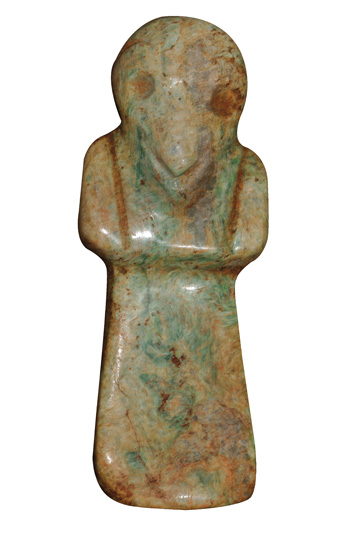
According to Schieber and Orrego, the Vulture Lord’s tomb is a bridge between the two styles, with the Olmec becoming obsolete in his time. “He was a very rich ruler who still had Olmec traditions,” she says. “But he was already showing Maya stylistic influences in the things he took to the grave.” For example, while the vulture and the ceramic women look Maya—that tattoo is an exact match to a mural pattern at the early Maya site of San Bartolo, says Schieber—the jade ornaments on the deceased’s body closely resemble those on a ruler depicted in stone at the Olmec city of La Venta. A pair of charming jade mosaic faces from a separate group of artifacts suggest early Maya iconography. Although excavated by Schieber and Orrego close to the Vulture Lord’s tomb, they date from about five centuries after his lifetime and may be evidence that the Maya transition was complete by then, Schieber explains.
The shifts in motifs and styles are not simply a matter of changing fashions, say Schieber and Orrego. They also reflect shifts in ideology and political allegiances that we can barely understand today. “Don’t forget that this is a king buried here,” says Orrego. “The dominant style is changing with him, and that suggests that the rise of Maya influence had a political stamp, that change was led from above, and that his subjects followed.”

The tomb’s discovery comes as scholars of Mesoamerican history are revising the idea of the Olmec as the “mother culture” that begat the Maya. Instead, a more nuanced view holds sway these days. “I think the Olmec stylistic influence was created through a broad interaction between elites over a very large area,” says archaeologist Michael Love of California State University in Northridge, who excavated at Takalik Abaj in the 1980s, and later at a nearby, roughly contemporaneous site called La Blanca. “I don’t see the Olmec style as a one-way flow from the Gulf Coast of Mexico, as previously thought.”

And as for the tomb, some researchers, including archaeologist Stephen Houston of Brown University, see little connection to the Olmec in the tomb’s offerings. Houston maintains that elite tastes had completely shifted to the Maya by the time of the burial, or that they had never been Olmec at all. The lack of any human remains—the absence of calcium in the volcanic soil causes bones to decompose quickly—has added to the enigma about exactly who the tomb’s occupant was. “This is clearly a high-ranking individual, although I don’t entirely see the connection to the Olmec, who prized jade, but in rather different styles,” says Houston. “The amount of jade is certainly consistent with the high status of this person, although, without a skeleton, it’s difficult even to say if it’s a man or a woman.”
Eventually, conservators on Schieber and Orrego’s team will be stringing the Vulture Lord’s jade necklaces and putting his other body jewelry back together, but it’s not just the beauty of these artifacts that captivates them. “To find the Olmec and Maya artistic styles side by side is a very rare occurrence,” says Schieber. “We’re seeing the beginning of the Maya before our eyes.”





